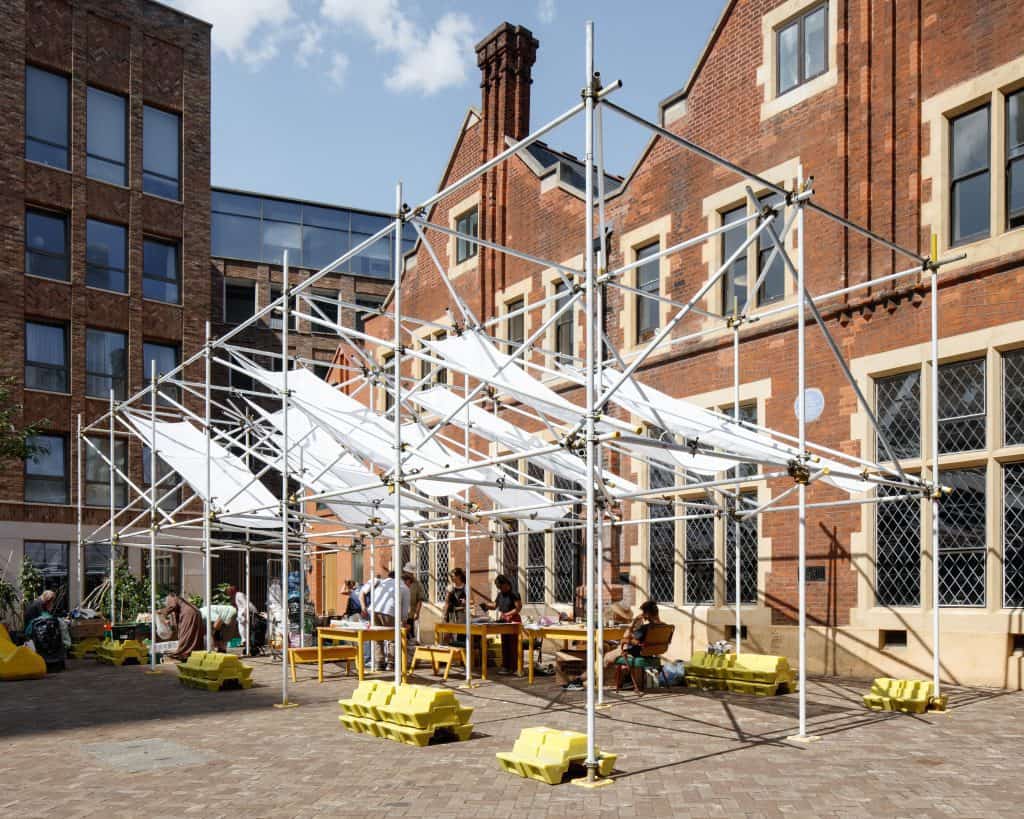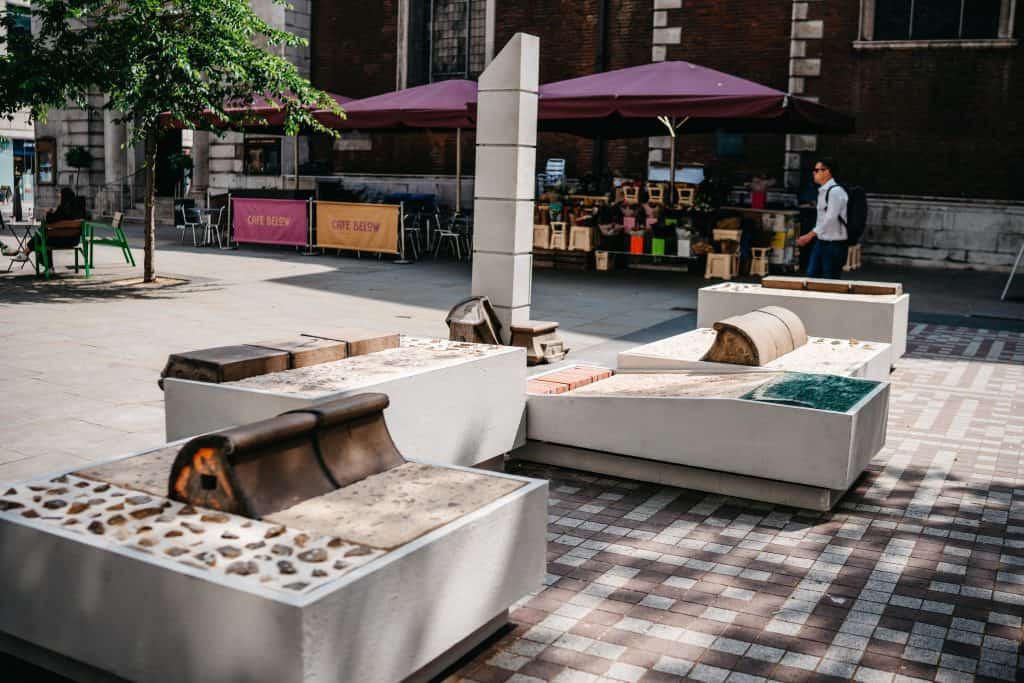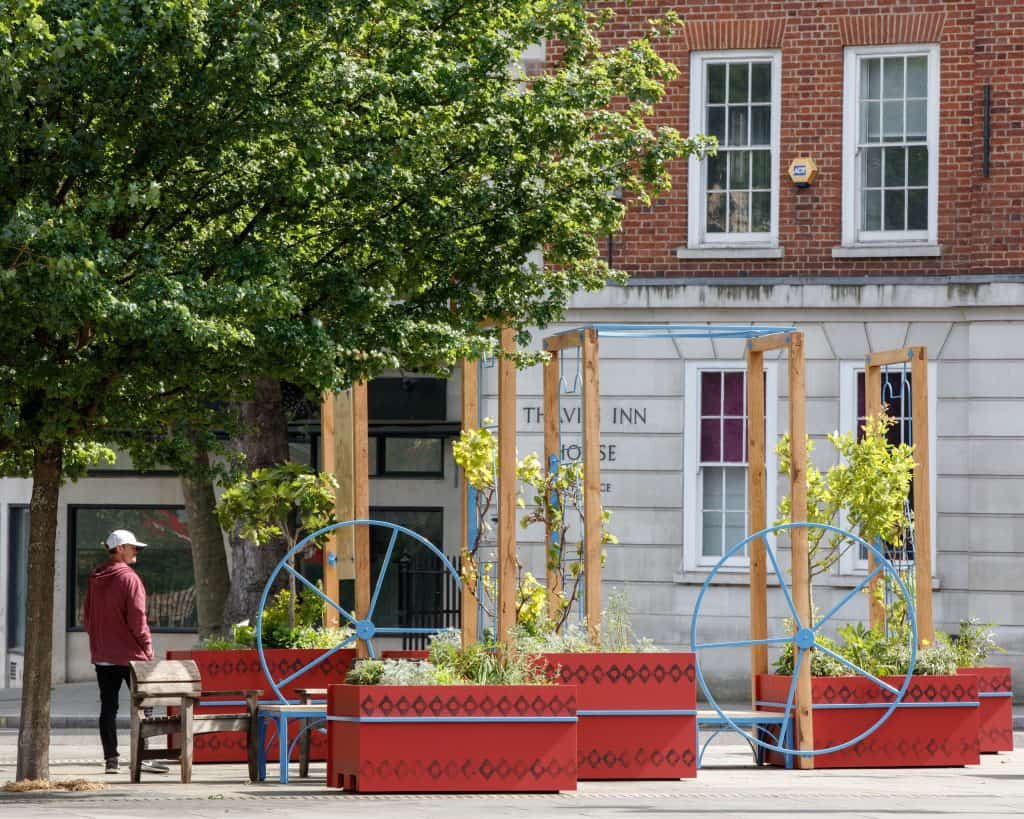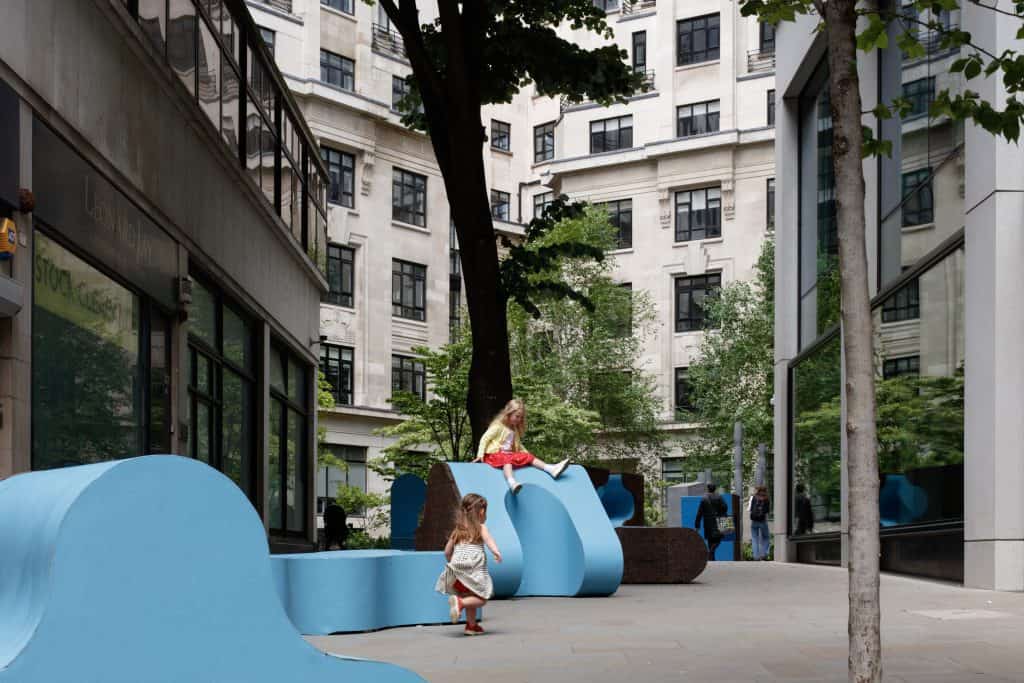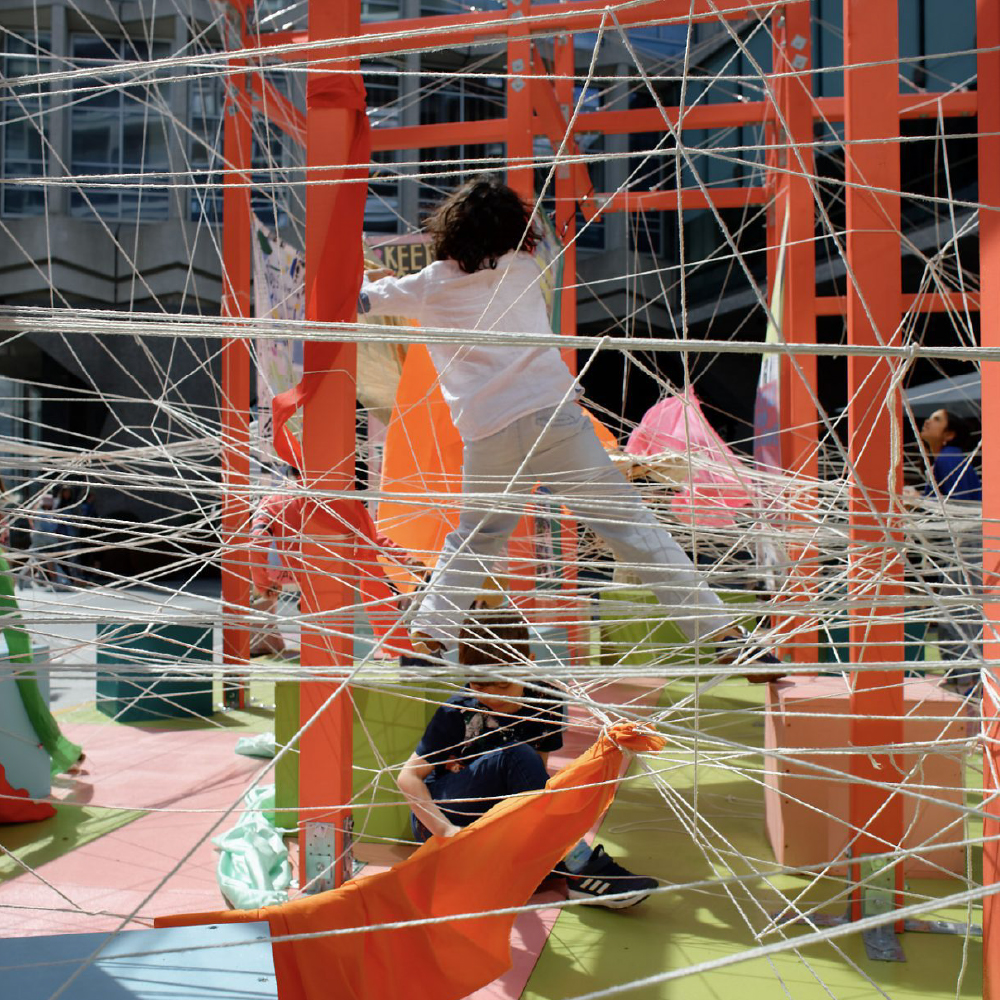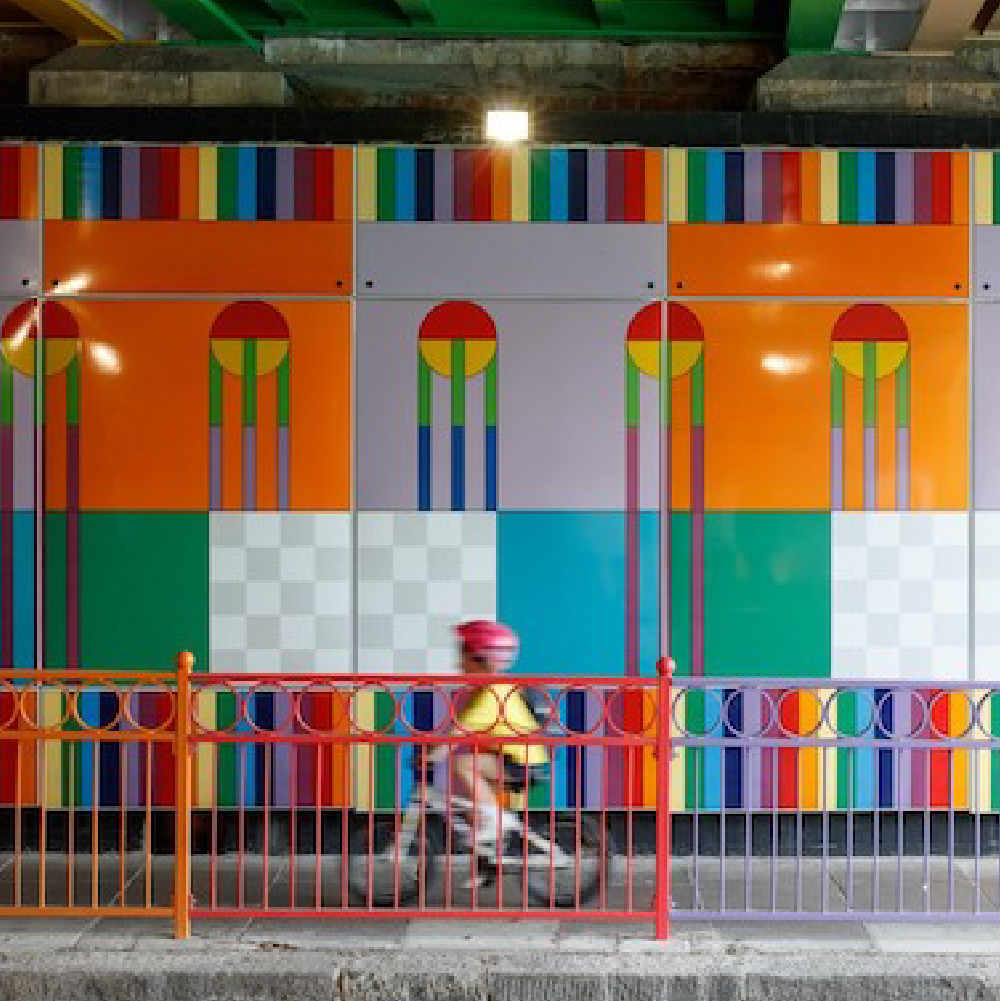From the top of the cable car we looked onto the Royal Docks, one of the biggest building sites in London. Since its closure to commercial shipping in 1981, the area has become a surreal mixture of brownfield sites, commercial property, an airport and half-built luxury flats. One of our tour-guides, Lee Mallett, pointed to the half-built Royal Wharf development on the far side of the river. Currently under construction by Singaporean firm Oxley Holdings, the 3400 flat complex is a prophetic monument to the way this once thriving industrial hub is changing.
When the cable car arrived on the north side of the Thames, we looked out onto the London Royal Dock, a two-kilometer expanse of water and the largest open space in the city. Currently only occupied by a small floating hotel, a large luxury boat and a wakeboard ‘experience’, the dock is effectively empty and out of use. It was here that the tour turned to explore the focus of the river walk: an ongoing proposal for a floating village by architectural practice dRMM. Alex de Rijke, director of the project, shared his vision from the cable car station as we sheltered from the rain.
The aspiration of the floating village is to create a development that can not only supply well needed homes, but also help foster a sense of place in an otherwise desolate area. Inspired by projects such as the Ijburg floating village in Amsterdam, the proposal is to have 50 homes built on floating concrete bases, commercial property, and interconnecting paths which can all be re-arranged to suit the needs of users. Free floating architecture is also effective from an economic perspective, with such a large proportion of building costs usually going into purchasing land and foundations.
At this stage the project is still an idea, currently still in negotiation with Newham Council. As we walked around the dock, we looked at the surrounding area and the potentials of the site. Although most traces of the past have disappeared, the water is still surrounded by steel cranes that once unloaded goods from the ships. Today, the warehouses and workers have been replaced by the ExCel London exhibitions center and a few silent residents. It’s hard to imagine this as a bustling part of the city, but with numerous other projects about to begin in the area, it’s anyone’s guess what it might be like in ten years.
Although London’s canals are filled with floating dwellings, this would be the first floating village (as Boris Johnson referred to it) in London. In his discussion on the project, Alex de Rijke emphasized his aim to integrate the project into the existing space, avoiding adding pile moorings into the dock to anchor the homes, and retaining plant life and biodiversity in the water. The idea of staying true to the area is also echoed in the floating architecture itself, a distant recollection of the many boats that would have once been docked there, and a recognition to the nautical character of the city.
We paused on the bridge that spans the water, looked over on both sides by Canary Wharf and London City Airport. The sound of planes taking off boomed over the water every two minutes, shattering the silence over the dock. Framed by these two centers of commerce and globalization, the Royal Docks are becoming noisy once again.


